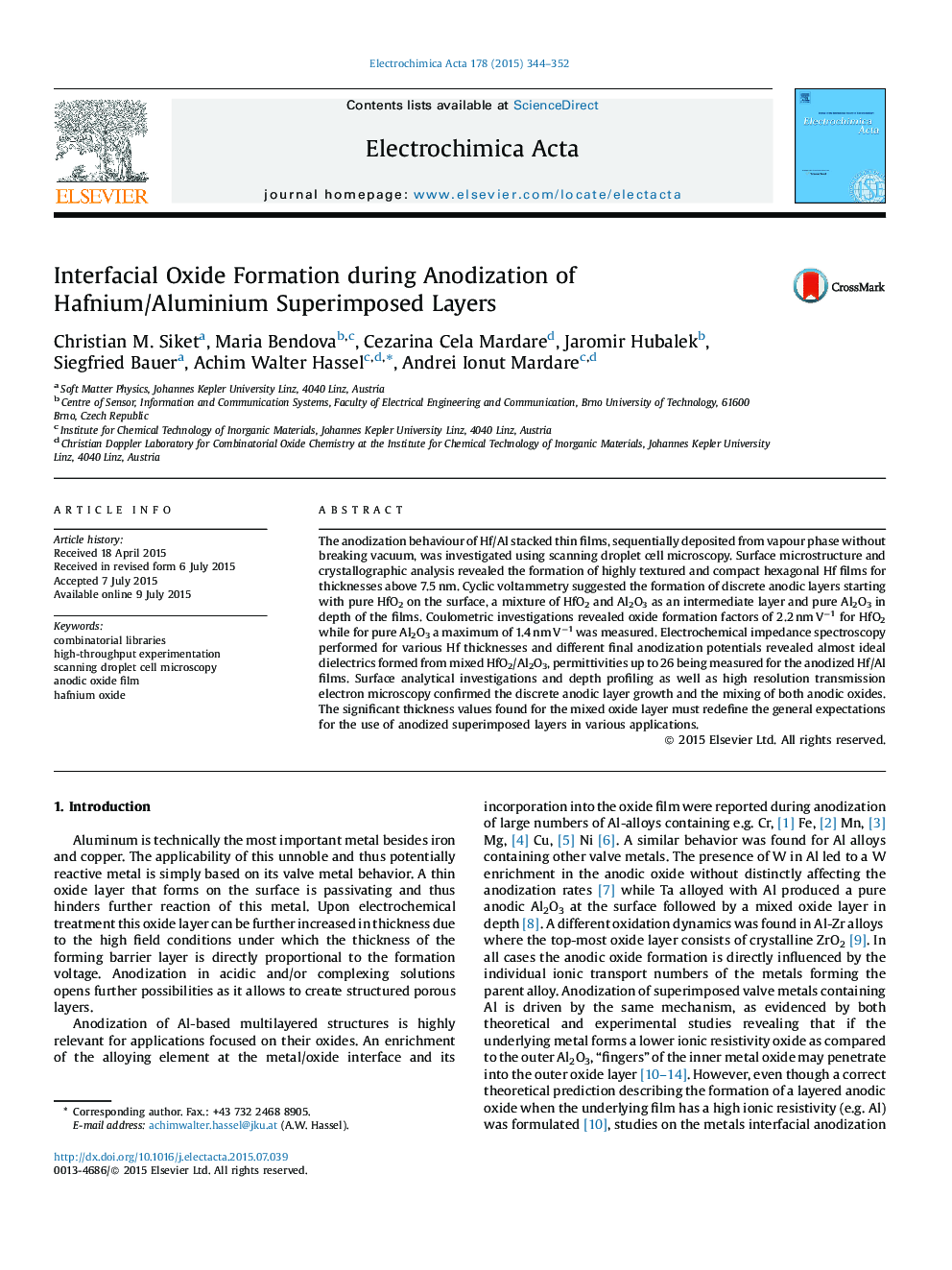| Article ID | Journal | Published Year | Pages | File Type |
|---|---|---|---|---|
| 183691 | Electrochimica Acta | 2015 | 9 Pages |
•anodization of ultra-thin Hf films on Al was studied and analysed by XPS•small Hf grains uniformly cover much larger Al grains and their grain boundaries•hexagonal Hf (0 0 0 1) was grown on (1 1 1) fcc Al with a lattice mismatch of 9 %•3-step anodic oxidation is found resulting in HfO2, HfO2/Al2O3 and Al2O3 stacks
The anodization behaviour of Hf/Al stacked thin films, sequentially deposited from vapour phase without breaking vacuum, was investigated using scanning droplet cell microscopy. Surface microstructure and crystallographic analysis revealed the formation of highly textured and compact hexagonal Hf films for thicknesses above 7.5 nm. Cyclic voltammetry suggested the formation of discrete anodic layers starting with pure HfO2 on the surface, a mixture of HfO2 and Al2O3 as an intermediate layer and pure Al2O3 in depth of the films. Coulometric investigations revealed oxide formation factors of 2.2 nm V−1 for HfO2 while for pure Al2O3 a maximum of 1.4 nm V−1 was measured. Electrochemical impedance spectroscopy performed for various Hf thicknesses and different final anodization potentials revealed almost ideal dielectrics formed from mixed HfO2/Al2O3, permittivities up to 26 being measured for the anodized Hf/Al films. Surface analytical investigations and depth profiling as well as high resolution transmission electron microscopy confirmed the discrete anodic layer growth and the mixing of both anodic oxides. The significant thickness values found for the mixed oxide layer must redefine the general expectations for the use of anodized superimposed layers in various applications.
Graphical abstractFigure optionsDownload full-size imageDownload as PowerPoint slide
